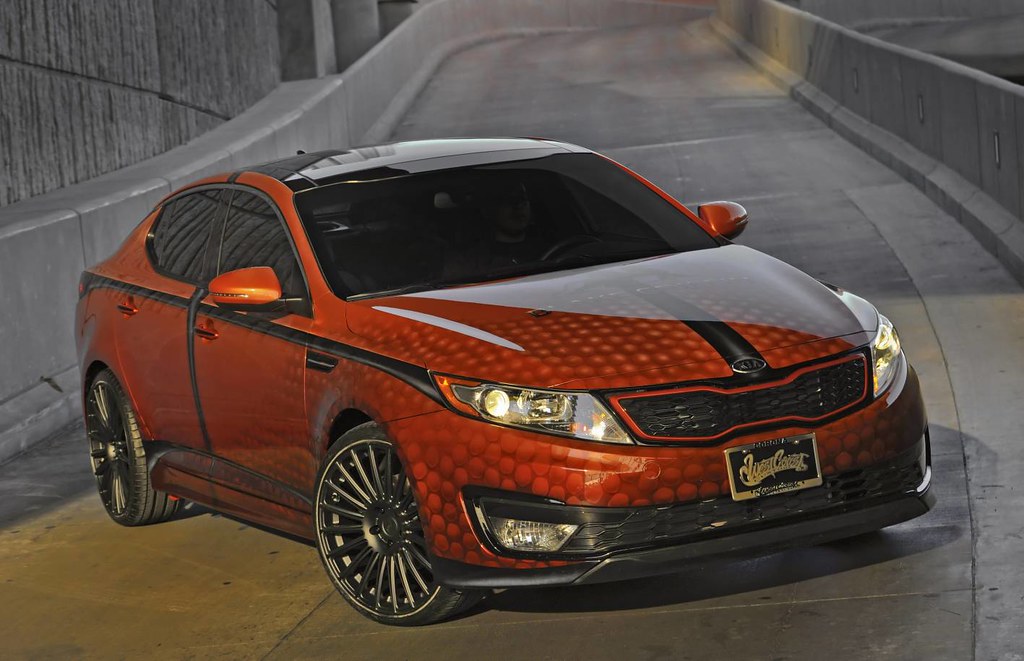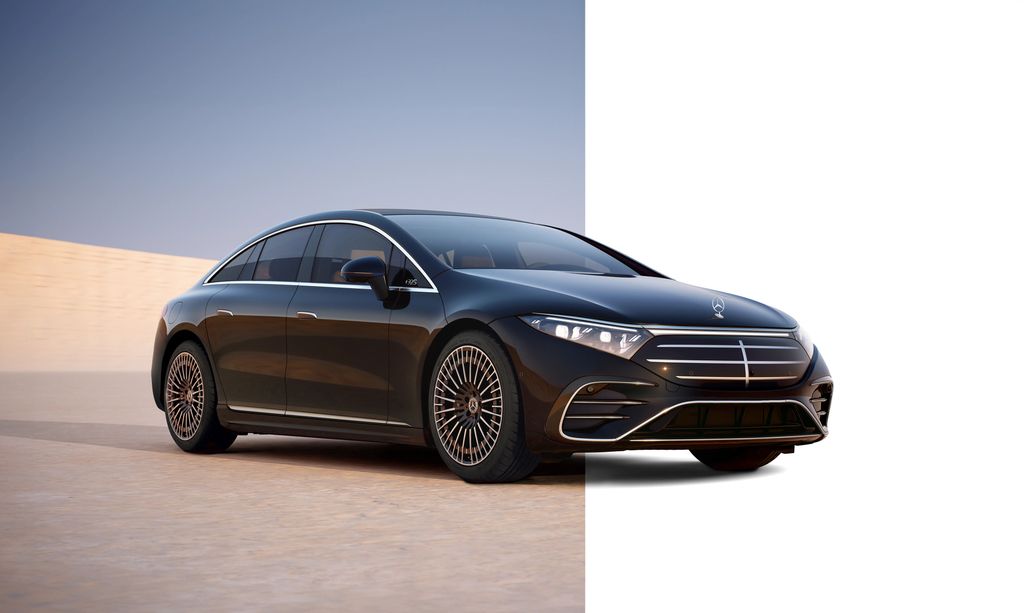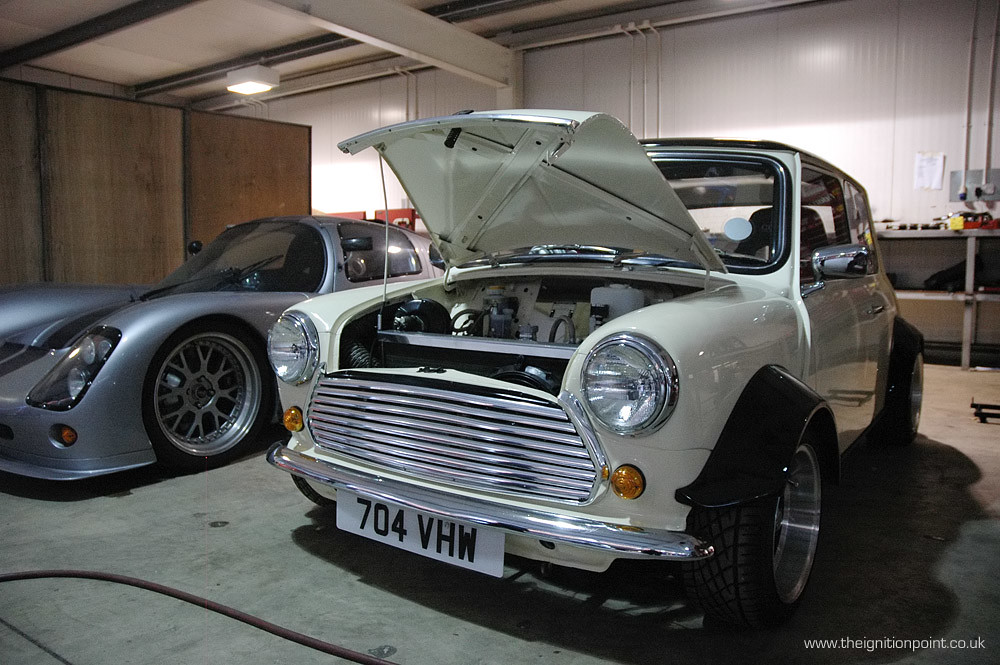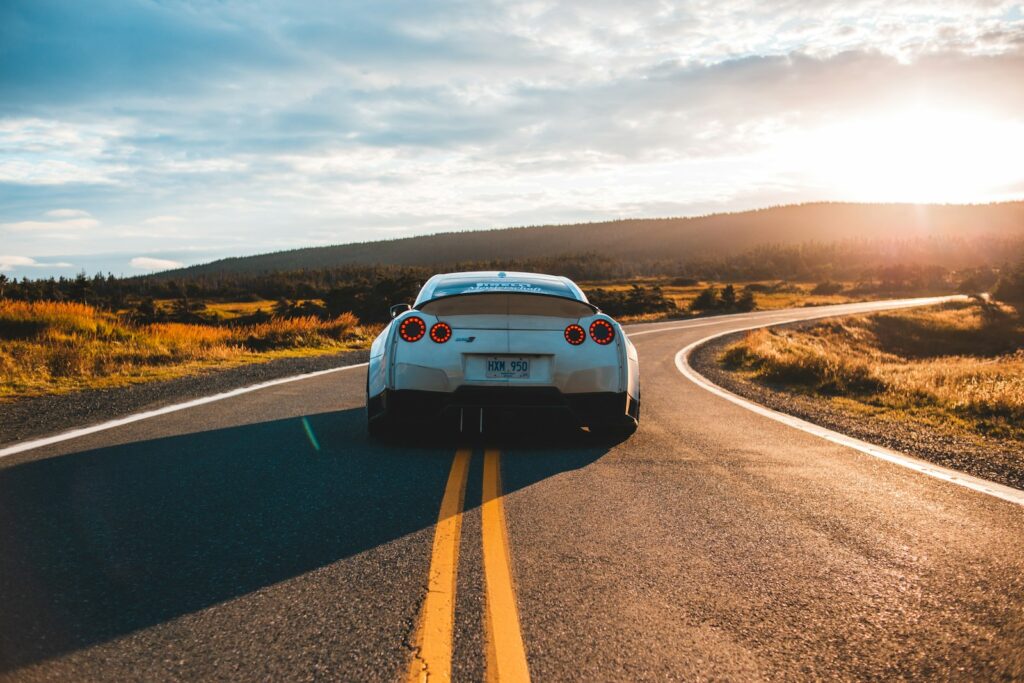
The automotive world is in a constant state of flux, always evolving to meet changing consumer demands, technological advancements, and societal expectations. For decades, the Sport Utility Vehicle (SUV) has been a dominant force, captivating buyers with its promise of versatility, perceived safety, and commanding presence. These vehicles, combining elements of road-going passenger cars with features from off-road vehicles like raised ground clearance and often four-wheel drive, have reshaped personal transportation habits across the globe.
Yet, beneath the surface of their widespread popularity, a nuanced re-evaluation of SUVs is underway. As urban environments become more congested, environmental awareness grows, and the true costs of vehicle ownership are increasingly scrutinized, many drivers are beginning to look beyond the allure of larger vehicles. This shift isn’t about a sudden dislike for SUVs, but rather a growing recognition of various factors that highlight the practical, environmental, and safety advantages of smaller, more nimble alternatives.
Our deep dive into the automotive landscape reveals a compelling narrative of change. We will explore nine critical factors that are increasingly prompting owners to consider moving away from the traditional SUV, driving a subtle yet significant reassessment of what constitutes the ideal vehicle for modern living. This comprehensive analysis will equip you with the insights needed to understand this evolving trend in personal mobility.

1. **The Environmental Imperative: Fuel Inefficiency and Carbon Emissions**One of the most persistent and impactful criticisms leveled against Sport Utility Vehicles revolves around their environmental footprint, particularly their fuel efficiency and subsequent contribution to carbon emissions. SUVs, by their very design, generally exhibit poorer fuel efficiency compared to smaller passenger cars. This inherent characteristic means they consume more fuel for the same distance traveled, directly impacting both the owner’s wallet and the planet’s health.
This isn’t merely a theoretical concern; the data underscores a tangible and growing problem. SUVs emit approximately 700 megatonnes of carbon dioxide per year, a gas directly linked to global warming. In a striking revelation from the International Energy Agency (IEA), SUVs were identified as the second-largest contributor to the global increase in CO2 emissions worldwide between 2010 and 2018, surpassed only by the power sector itself. This statistic alone highlights the significant environmental burden imposed by the proliferation of these vehicles.
The IEA’s analysis further illustrates this point by noting that SUVs were responsible for all of the 3.3 million barrels a day growth in oil demand from passenger cars between 2010 and 2018. During the same period, efficiency improvements in smaller cars managed to save over 2 million barrels a day, while electric cars, despite their rising profile, reduced oil demand by less than 100,000 barrels a day. These figures vividly demonstrate how the increasing preference for SUVs effectively negated many of the gains made in fuel efficiency across other vehicle segments, deepening the global reliance on fossil fuels.
On average, SUVs consume about a quarter more energy than medium-size cars. This increased energy demand translates directly into higher fuel consumption and, consequently, greater emissions. Despite ongoing advancements in automotive technology, including the potential for electrification or conversion to alternative fuels, the fundamental design of SUVs means they continue to represent a significant challenge in the global effort to reduce carbon emissions and combat climate change. Their sheer size and weight remain primary determinants of their energy appetite, making them less sustainable choices in an increasingly environmentally conscious world.

2. **Manufacturing Footprint: Resource Consumption and Degradation**Beyond their operational fuel efficiency, SUVs also face scrutiny for their substantial manufacturing footprint, which demands more resources and contributes significantly to environmental degradation. The sheer volume of materials and energy required to produce a larger, heavier vehicle like an SUV often dwarfs that of a smaller car. This resource-intensive production process begins long before the vehicle even reaches a showroom floor, impacting ecosystems and raw material reserves.
From the mining of metals to the fabrication of complex components, the manufacturing journey of an SUV involves a more extensive draw on natural resources. This increased demand for materials contributes to habitat destruction, pollution from mining operations, and higher energy consumption during the production phase. The environmental degradation associated with resource extraction and processing is a critical, often overlooked, aspect of a vehicle’s overall environmental impact, extending far beyond tailpipe emissions.
The context explicitly states that SUVs “require more resources to manufacture than smaller vehicles, contributing more to climate change and environmental degradation.” This critical point highlights that even if an SUV were to be electrified or converted to run on alternative fuels, its environmental impact would still remain larger than that of smaller electric cars. The initial embedded carbon and resource use in its creation are inherently greater due to its size and complexity, creating a larger overall lifecycle footprint.
Consequently, while advancements in powertrain technology are important, they cannot entirely mitigate the environmental cost associated with the sheer physical scale of SUVs. The energy and resources expended in their construction are a fixed cost that contributes to their larger ecological burden. This manufacturing intensity is another compelling reason why some consumers, weighing the full spectrum of environmental responsibility, might gravitate towards smaller, less resource-intensive vehicles.

3. **The Rollover Conundrum: Understanding SUV Stability Risks**For many years, the perceived safety of SUVs, largely attributed to their imposing size and elevated ride height, was a significant draw for consumers. However, an inherent characteristic of many traditional SUVs — their high ground clearance and tall body — also creates a crucial safety concern: an increased propensity for rollover accidents. This higher center of mass fundamentally alters their dynamics compared to lower-slung passenger cars, particularly during abrupt maneuvers or collisions.
Historical data underscores this vulnerability. As recently as 2003, SUVs were quoted as 2.5 times more likely to roll over in a crash than regular cars. The period between 1991 and 2001 saw an alarming 150% increase in sport-utility vehicle rollover deaths in the United States. In 2001, even though rollovers constituted just 3% of all vehicle crashes, they were responsible for over 30% of occupant fatalities in crashes. This stark disparity reveals the severity of injuries and fatalities when a rollover does occur, making it a critical area of concern for safety advocates and consumers alike.
Furthermore, in crashes where a vehicle did roll over during the early 2000s, SUV occupants were nearly three times as likely to be killed as passengers in other car types. The design of SUV roofs also came under scrutiny, as they were “more likely to cave in on passengers than in other cars, resulting in increased harm to passengers.” These statistics painted a concerning picture about the real-world safety performance of SUVs in specific, high-risk crash scenarios.
The susceptibility of vehicles with a high center of gravity to instability is also demonstrated in standardized maneuverability tests, such as the Swedish consumer magazine Teknikens Värld’s “moose test.” Notable examples like the 1997 Mercedes-Benz A-Class and the 2011 Jeep Grand Cherokee have, at times, failed these critical evaluations. While the introduction of electronic stability control (ESC) and rollover mitigation technologies has dramatically improved SUV safety, leading to a significant reduction in rollover death rates by 2015, the fundamental physics of a high center of gravity remains a consideration for drivers prioritizing absolute stability and control.

4. **Pedestrian and Cyclist Vulnerability: The Higher Front-End Impact**Beyond the safety of their own occupants, SUVs pose a distinct and elevated risk to other vulnerable road users, specifically pedestrians and cyclists. The combination of their higher front-end profile and increased mass makes collisions with SUVs far more dangerous for those outside the vehicle. This is a critical factor influencing urban safety and a growing concern for communities advocating for safer streets.
Studies have consistently highlighted this danger. SUVs are noted as being “at least twice as likely to kill pedestrians they hit” compared to smaller cars. This grim statistic is amplified by research, such as a 2021 study by the University of Illinois Springfield, which showed that SUVs are “8 times more likely to kill children in a collision than passenger cars,” and “multiple times more lethal to adult pedestrians and cyclists.” These findings paint a sobering picture of the disproportionate risk posed by larger vehicles in pedestrian and cycling environments.
The design of SUVs further exacerbates this issue due to differing regulatory standards. In the United States, for instance, SUVs are exempt from regulations requiring passenger car bumpers to protect the area between 16 and 20 inches (41 and 51 cm) above the ground. This often results in impacts occurring at a higher point on the pedestrian’s body, leading to more severe injuries. Consequently, the increasing popularity of SUVs was identified as a contributing factor to the rise in pedestrian fatalities in the U.S. during the 2010s, alongside issues like distracted and drunk driving.
The consequences extend beyond direct collisions. A 2020 study by the U.S.-based IIHS found that, of a sample of 79 crashes, SUVs caused more serious injuries compared to cars when impacts occurred at greater than 31 km/h (19 mph). These findings, while based on a small sample, indicate a trend that necessitates more research and consideration. Public protests against SUVs in urban areas, driven by the perceived danger they pose to cyclists and pedestrians, are becoming increasingly common, reflecting a growing societal awareness of this critical safety concern.

5. **Navigating Urban Jungles: Parking Challenges and “Tractor” Perceptions**While SUVs often project an image of rugged capability and spacious comfort, their suitability for dense urban environments is increasingly being questioned. The very attributes that make them appealing for off-road adventures or large family hauling — their size and weight — become significant liabilities in crowded cityscapes. Navigating narrow streets, fitting into standard parking spaces, and simply existing harmoniously within urban infrastructure presents daily challenges that are increasingly frustrating for drivers and urban planners alike.
One of the most direct and tangible responses to this challenge has come from city authorities. In February 2024, voters in Paris mandated a triple parking charge rate for SUVs, a decision explicitly citing their environmental impact and the strain they put on street capacity. This precedent follows similar ordinances in other European cities, including Lyon and Tübingen, with London, Brussels, and Amsterdam actively considering comparable measures. Such policies serve as a clear indicator of a growing municipal resistance to oversized vehicles in urban cores, directly impacting the financial and practical feasibility of SUV ownership for city dwellers.
Beyond parking fees, the perception of SUVs in urban settings has also shifted, giving rise to a collection of derogatory nicknames. Terms like the British “Chelsea tractor,” the Australian “Toorak Tractor,” the New Zealand “Remuera Tractor,” the Norwegian “Børstraktor” (‘Stock Exchange Tractor’), and the Dutch “P.C. Hooft-tractors” are commonly used. These sardonic labels highlight the perceived disconnect between the off-road capabilities of these vehicles and their common use by affluent urban residents, often viewed as status symbols rather than practical necessities.
These nicknames and policy changes reflect a growing sentiment that large SUVs are out of place in urban environments. They symbolize an incompatibility with the realities of city life, from consuming excessive public space for parking to contributing to a less pedestrian-friendly atmosphere. For urban residents seeking convenience, efficiency, and a lighter footprint, these factors collectively present a powerful argument for ditching the larger SUV in favor of something smaller and more fitting for the rhythm of city living.

6. **Navigating the Regulatory Landscape: How Classifications Shape the SUV Market**Our journey through the evolving automotive landscape wouldn’t be complete without examining the intricate web of government regulations and classifications that have, perhaps unintentionally, shaped the rise and re-evaluation of the SUV. For decades, these vehicles have occupied a unique regulatory niche, often benefiting from classifications originally designed for commercial vehicles rather than personal transport. These regulations profoundly impacted manufacturing decisions, vehicle costs, and environmental footprints.
In the United States, for instance, a significant aspect of this dynamic lies in how SUVs have often been categorized. Many government regulations simply lumped them into broad categories like “off-highway vehicles,” a loosely defined term that frequently led to SUVs—along with pick-up trucks and minivans—being classified as “light trucks.” This classification created a crucial loophole within CAFE regulations. These rules previously defined “trucks” as vehicles that “permit greater cargo-carrying capacity than passenger carrying volume,” a definition so broad that even cars with removable rear seats, such as the PT Cruiser, could technically be classified as light trucks.
This “light truck” designation offered manufacturers considerable advantages. While passenger cars faced tougher scrutiny, SUVs enjoyed more lenient requirements, enabling manufacturers to produce larger, more profitable vehicles with less regulatory burden. The U.S. Environmental Protection Agency, for example, even agreed to classify the Jeep Cherokee as a light truck after lobbying, a vehicle subsequently marketed primarily as a passenger vehicle. This played a key role in fueling the SUV boom, as manufacturers introduced their own models to capture sales from traditional cars.
While the regulatory environment has evolved—from 2004 onwards, the EPA began holding SUVs to the same tailpipe emissions standards as cars for criteria pollutants (though not greenhouse gas emissions until 2010), and 2011 CAFE regulations even reclassified small, two-wheel-drive SUVs as passenger cars—the historical impact of these distinctions remains significant. This regulatory narrative isn’t unique to the U.S. In India, all SUVs fall under the “Utility Vehicle” category, attracting a 27% excise tax, which jumps to 30% for those exceeding specific dimensions and engine sizes. Australia, too, once incentivized SUV sales with lower import duties compared to passenger cars. These examples underscore how government classifications have profoundly shaped the market, influencing both supply and demand for SUVs and contributing to owners’ re-evaluation.

7. **The Crossover Phenomenon: Blurring Lines and Expanding Appeal**The automotive world has witnessed an explosive growth and evolving definition of the “crossover SUV” segment. Often dubbed CUVs or simply “crossovers,” these vehicles have become a dominant force, particularly since around 2010, fundamentally altering consumer expectations of what an SUV can be. The lines between traditional SUVs and passenger cars have blurred, creating a new category that prioritizes a blend of practicality, comfort, and efficiency, rather than outright ruggedness.
At its core, the rise of the crossover is rooted in its design philosophy: taking a passenger car platform and imbuing it with SUV-like styling cues, such as raised ride height and a more commanding presence. This approach yields benefits: crossovers typically offer better comfort and fuel economy than body-on-frame SUVs, making them palatable for daily commutes. While they might offer less off-road capability—with many crossovers even being sold without all-wheel drive—their car-like driving dynamics and efficiency resonate deeply with a broad spectrum of buyers who appreciate the aesthetic and practicality without the traditional SUV’s compromises.
The distinction between a crossover and a conventional SUV often boils down to construction: crossovers are typically built using a unibody platform, much like most passenger cars, whereas traditional SUVs historically relied on body-on-frame construction, akin to light trucks. However, this definition is increasingly fluid in practice. The market has seen a rapid proliferation of unibody vehicles unequivocally referred to as SUVs, blurring the dividing line. In fact, the term “crossover” itself is relatively recent; early unibody SUVs, such as the groundbreaking 1984 Jeep Cherokee (XJ), a major sales success often credited as the first SUV in the modern sense due to its compact size, unibody construction, and plush interior, are rarely retroactively labeled as crossovers.
This fluidity has led to “SUV” often becoming a catch-all term encompassing both categories. While outside the United States, “crossover” tends to refer specifically to C-segment (compact) or smaller vehicles, larger unibody behemoths like the Mercedes-Benz GLS-Class, BMW X7, and Range Rover are still firmly categorized as SUVs, not crossovers. Even in the United Kingdom, a crossover might be colloquially defined as little more than a hatchback with a raised ride height and some SUV-like styling. From the 1955 Russian GAZ-M20 Pobeda M-72, arguably the first mass-produced unibody four-wheel-drive passenger car, to the 1977 Lada Niva, an early off-road vehicle with unibody construction, the seeds of the crossover concept were sown long ago. Today, the prevalence of unibody construction across the SUV spectrum highlights a fundamental shift in automotive engineering and consumer preference, cementing the crossover’s role as a dominant and adaptable vehicle type.

8. **The Illusion of Invincibility: Perceived Safety and Driver Behavior**One complex aspect of the SUV phenomenon is its psychological impact on driver behavior, particularly regarding perceived safety. For many years, a significant draw for consumers was the belief that SUVs, with their larger size and elevated ride height, inherently offered greater safety for their occupants. This perception carries a critical downside: it can influence drivers to operate less cautiously, potentially creating a paradoxical situation where the vehicle’s perceived safety inadvertently increases risk for others.
This psychological dynamic has drawn attention from social scientists and safety experts. The “psychological sense of security” that SUVs provide can lead drivers to feel more insulated and protected, subtly nudging them toward less vigilant or even more aggressive driving habits. Malcolm Gladwell, in his 2004 article “Big and Bad,” suggested that the security of a larger vehicle might diminish a driver’s sense of vulnerability, altering their driving calculus and increasing danger for those in smaller vehicles, pedestrians, or cyclists.
The consequences of this perceived safety extend beyond individual driver behavior. It can also fuel a dangerous cycle within the automotive market, creating what some refer to as an “arms race” on the roads. When drivers of smaller vehicles observe the perceived safety advantages of SUVs, they too might “opt for SUVs in the future under the sense of security,” believing it’s necessary for their own protection. This escalating preference for larger vehicles, driven by the desire for perceived safety, inadvertently contributes to a greater overall risk, “all the while increasing the rate of fatalities of pedestrians,” as collisions with larger, heavier vehicles become more severe.
It’s important to acknowledge the advancements in SUV safety. The introduction of electronic stability control (ESC) and rollover mitigation technologies has dramatically improved their stability, leading the IIHS to report in 2015 that “the rollover death rate of 5 per million registered vehicle years for 2011 models is less than a quarter of what it was for 2004 models. With ESC dramatically reducing rollover risk, the inherent advantages offered by SUVs’ greater size, weight, and height emerge more clearly. Today’s SUVs have the lowest driver death rate of any vehicle type.” While these improvements contribute to occupant safety, they don’t negate the psychological effect on driver behavior or the disproportionate risk to vulnerable road users. This complex interplay of engineering, perception, and behavior remains a powerful factor influencing the ongoing re-evaluation of the large SUV.

9. **The Bottom Line: Financial Penalties and Profit Margins**Beyond environmental and safety concerns, financial implications of larger SUVs are a compelling reason for shifting consumer preference. What was once a straightforward purchase is now complicated by direct and indirect costs, from parking fees and duties to inherent profit motives. The economic reality of SUV ownership, both for consumers and manufacturers, offers a revealing glimpse into the market forces at play.
One of the most direct impacts on the consumer’s wallet comes from government-imposed taxes and duties, which vary significantly across regions. In India, for example, all SUVs are subject to a 27% excise tax, a figure that can climb to 30% for larger models exceeding specific thresholds for length, engine size, and ground clearance. This clearly positions larger SUVs as luxury items with a higher tax burden. Similarly, Australia, until January 2010, had lower import duties for SUVs (5%) compared to passenger cars (10%), a policy that arguably boosted their sales by making them more financially attractive, demonstrating how government policy can directly influence market trends and consumer choices.
However, the financial narrative extends beyond national borders to local urban policies. In February 2024, Parisian voters mandated a triple parking charge rate for SUVs, citing environmental impact and street capacity. This precedent is now being considered or implemented in other European cities, including Lyon, Tübingen, London, Brussels, and Amsterdam. Such measures directly increase the operational cost of SUV ownership, making them less economically viable and more burdensome for urban dwellers, forcing a practical re-evaluation of vehicle choice.
From a manufacturing perspective, the story is one of significant profit margins. Car manufacturers have historically been keen to promote SUV sales over other vehicle types because of the substantial financial returns in this segment. An SUV could command a profit margin of “US$10,000 or more,” with specific models like the Ford Excursion reportedly generating “US$18,000 per SUV.” This starkly contrasts with compact cars, which were “often sold at a loss of a few hundred dollars per car.” This immense profitability spurred manufacturers to convert plants to SUV production, like GM’s Arlington plant in 1996, and led to the discontinuation of many U.S. sedan models.
This profit-driven strategy was further enabled by regulatory loopholes. Following the 1980s oil glut, an era of cheap gasoline, manufacturers exploited the U.S. corporate average fuel economy (CAFE) standards, which included relaxed regulations for “light trucks.” By classifying SUVs as light trucks, despite their primary passenger use, companies secured tax concessions and less stringent fuel economy requirements. This allowed them to sell more profitable, larger, and often more polluting vehicles, effectively sidestepping the original intent of the CAFE regulations. These interwoven financial incentives and disincentives, from consumer costs to manufacturer profits, underscore a powerful, underlying current that is increasingly influencing the great SUV sell-off.
As we conclude our exploration of factors contributing to “The Great SUV Sell-Off,” it’s clear the automotive landscape is experiencing a profound transformation. What was once an undisputed symbol of versatility and perceived security is now under scrutiny, driven by environmental imperatives, evolving safety perceptions, urban challenges, and unfavorable financial realities. From the intricate classifications of government regulators to the profit-driven strategies of manufacturers and the shifting priorities of individual consumers, every facet of the SUV’s once-dominant position is being re-evaluated. The journey away from larger vehicles is not a rejection of innovation, but a thoughtful recalibration, signaling a future where smaller, more efficient, and environmentally conscious alternatives are a pragmatic choice for modern mobility.



